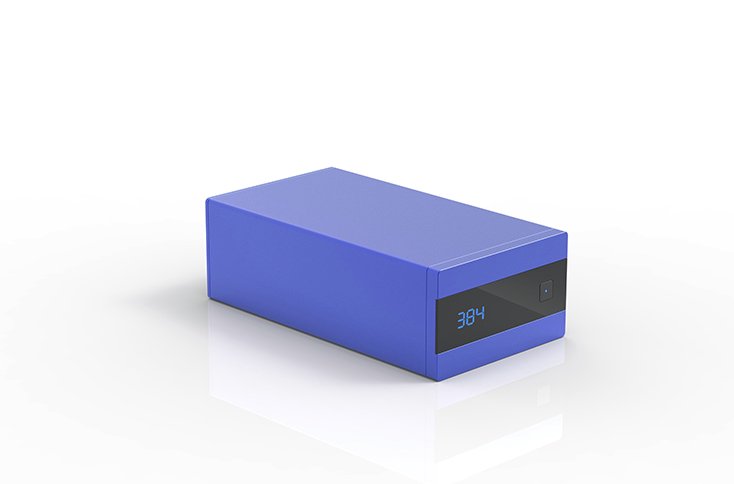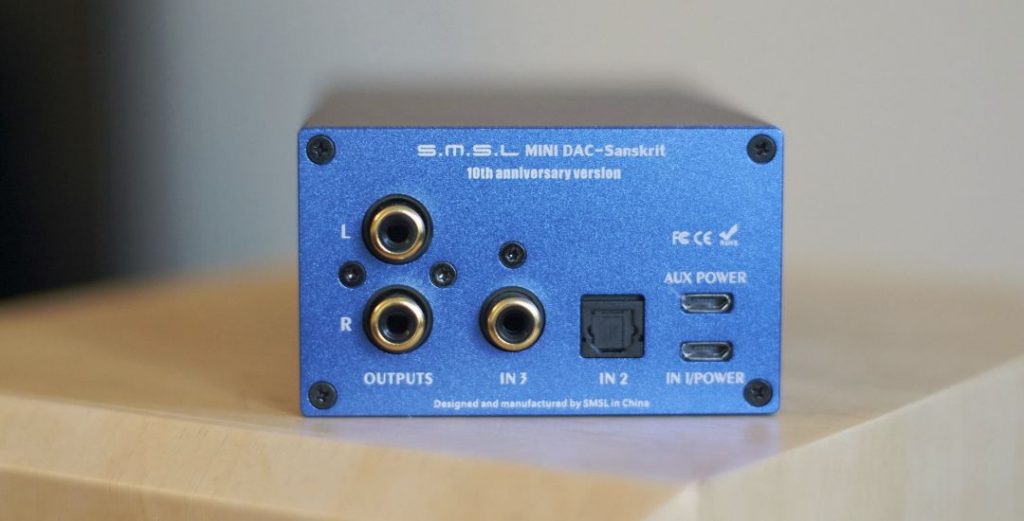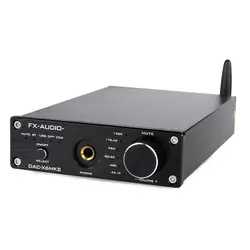Let’s start with the build and looks of SMSL Sanskrit 10th. I must say I was not a big fan of this colorful styling but interestingly enough it looks better in real life than it does on pictures. This blue color is not too tacky and shiny as it shows on screens. Built quality is also quite nice and paint coating looks like it will not scratch that easily.
You can keep it both horizontally and vertically. I love the idea that the screen rotates with the device. There are actually two screens inside and the device just chooses which one to use.
It comes with remote control, it’s plastic but stylish looking. I love the fact that I can turn it on or off, change inputs and control the volume from my couch. Every DAC should have this.
At the back, we have all important connections – USB, Optical, and Coaxial so you can hook it up to anything. It is powered through the USB port so if you’re not going to use it as signal input, you need to hook power to its upper USB port.
SOUND QUALITY
So far it’s all good, but let’s talk about the sound. This written review was published much later than my initial video review on YouTube, so I updated it according to current competition at the moment of publishing.
At first, listen I was not a huge fan of the sound quality. It was quite detailed but also bright and kind of thin. But there’s a twist to this – it turns out Sanskrit 10th output is improved when it’s powered with additional power supply. I was surprised by this because there was nothing about that in the user manual. And the device can really function OK powered by PC alone, but it does offer cleaner output if we use this additional power supply.
So I listened to DAC all over again with additional power supply, just a 2A wall wart – nothing fancy. The first thing I noticed was the greater dynamics of the sound, it became more lively. Secondly, bass became deeper and punchier so now I could feel more of the actual kick. Highs became more clear so I could hear more fine details. Last but not least – voices didn’t sound as sibilant as before. Much better.
CONCLUSION
SMSL Sanskrit 10th provides warm bass, open and bright mids and highs, so you should be careful if you already have a bright system. At the time of updating this review to its written form (the end of 2019), this unit is still a decent deal on a tight budget. However, there are some new and capable competitors you should consider like – Schiit Modi 3, Loxjie D10, and iFi Zen DAC if your budget stretches that far.
| SMSL SANSKRIT 10TH – CHARACTERISTICS |
|
Input interface: USB, optical, coaxial |







Any thoughts on the MK II?
What is your daily driver these days? The last I heard, it was the Loxjie D10.
Thank you!
I actually already did a video review on MKII – https://www.youtube.com/watch?v=L9lot5M2BHg&t=2s but I was on vacation for the last two weeks so didn’t have time to write it. I’ll try to do it soon. Long story short – it’s a really great DAC. These days I’m using Schiit Modi Multibit, but Sanskrit 10th MKII would be my 2nd choice or simply the best bang for the buck choice.